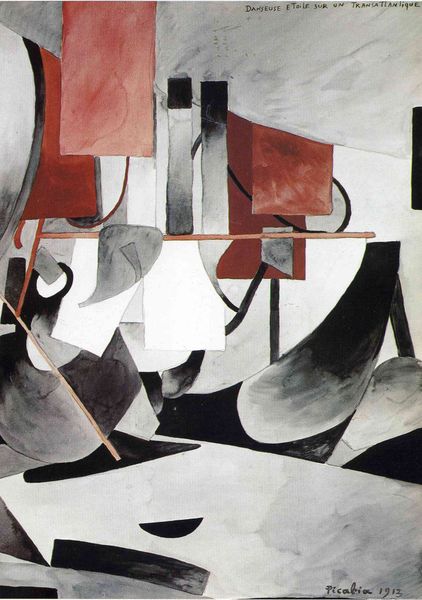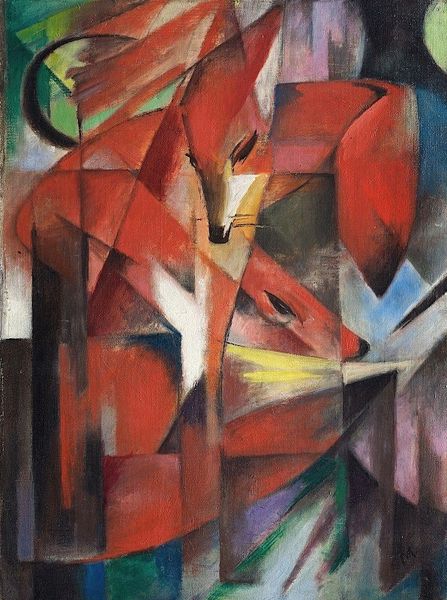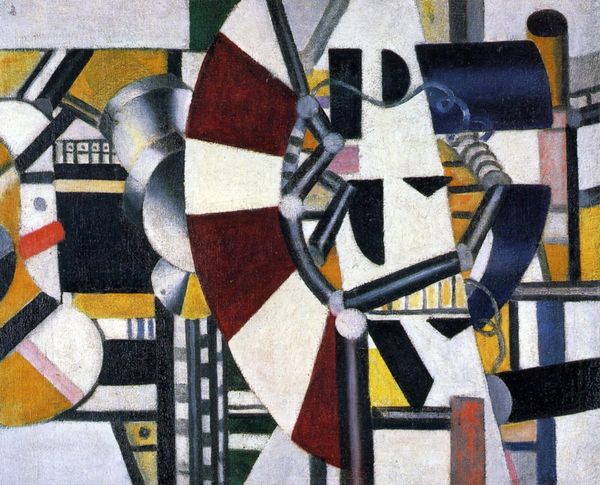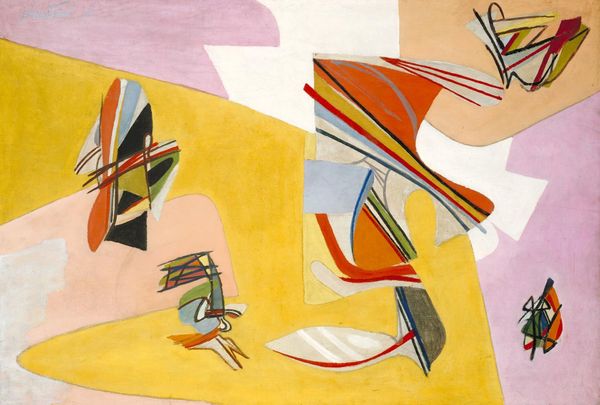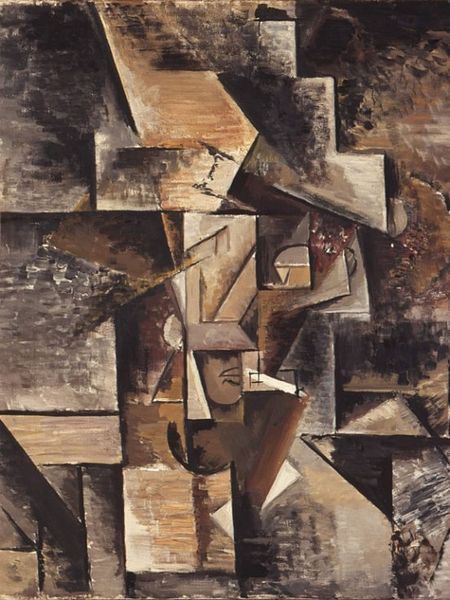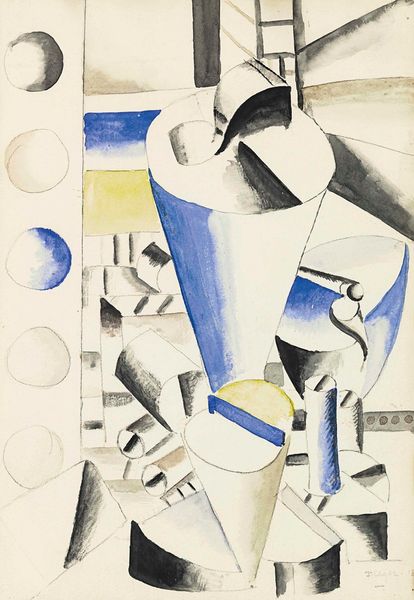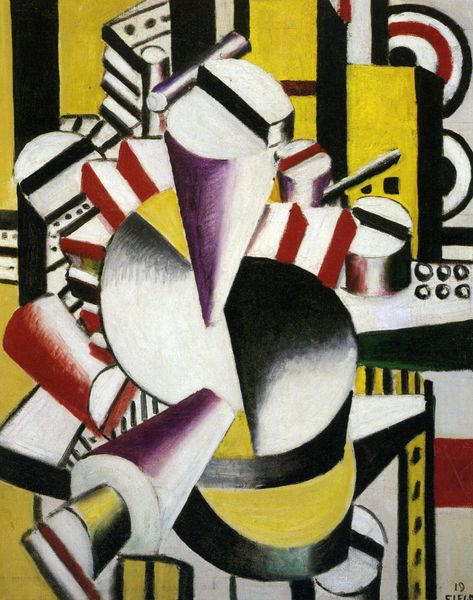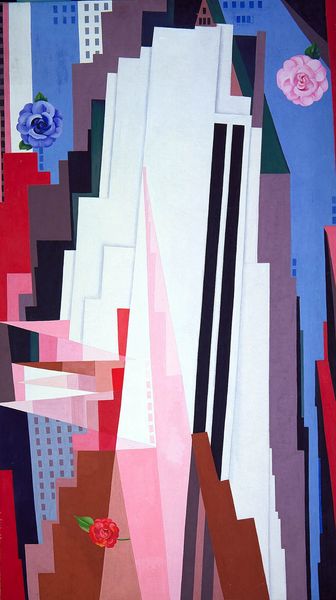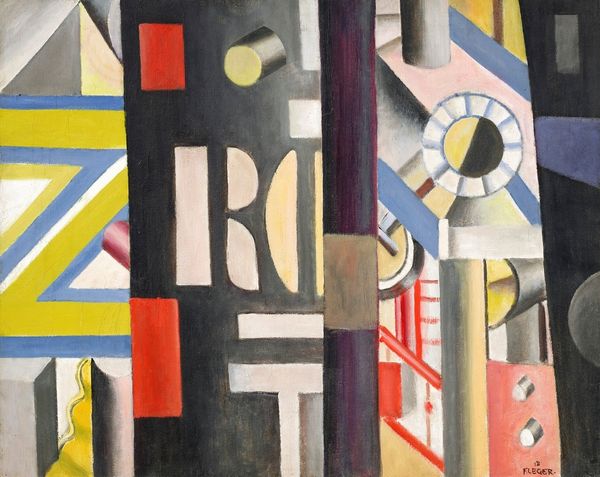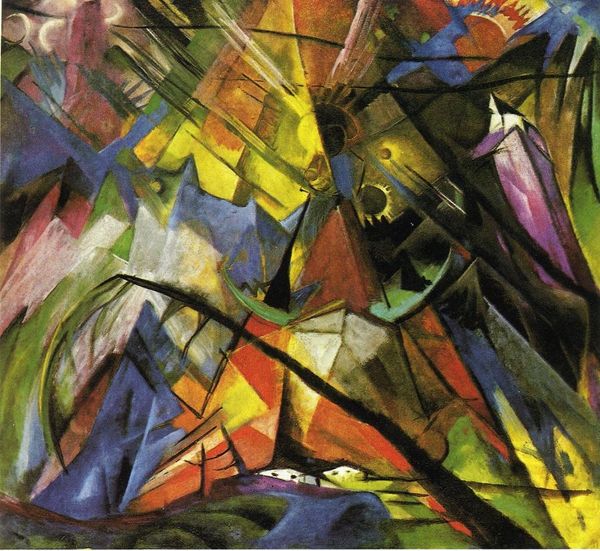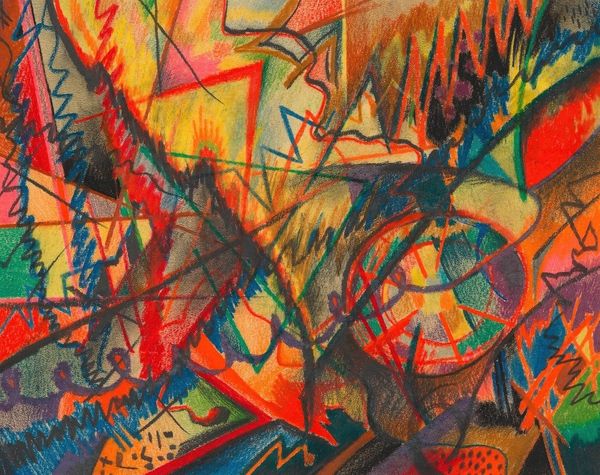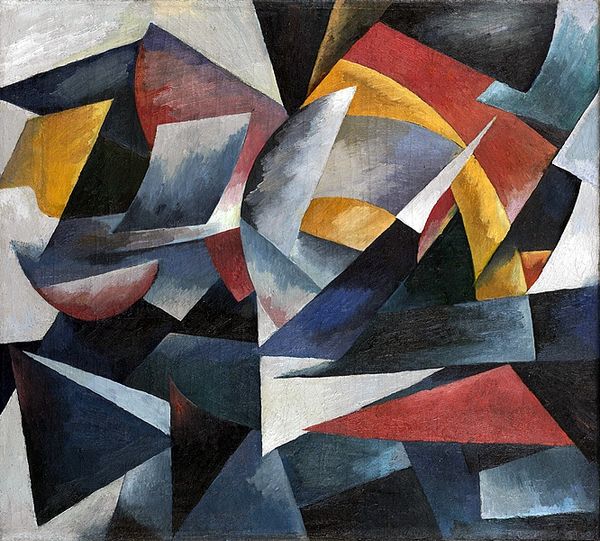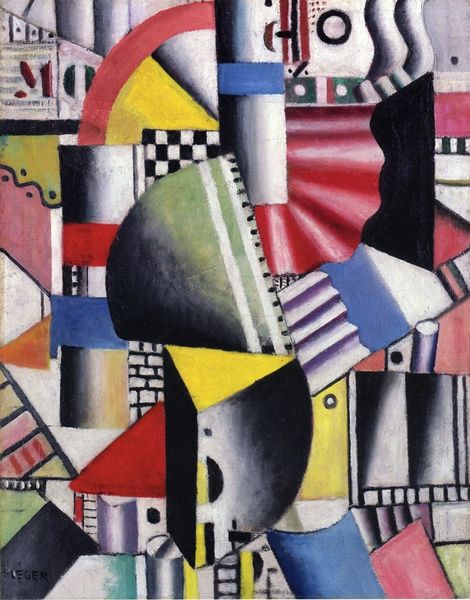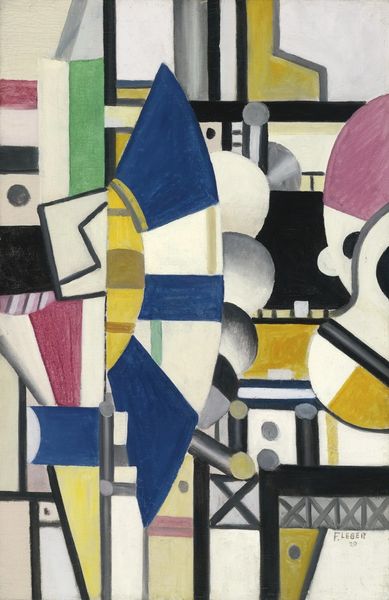
painting, ink
#
cubism
#
art-nouveau
#
abstract painting
#
painting
#
ink
#
pink
#
geometric
#
line
#
painting art
#
modernism
Copyright: Public domain US
Curator: I am immediately struck by the conflicting geometry and the muted, almost faded palette of pinks, grays, and browns. It feels intentionally disharmonious, even…awkward? Editor: We're looking at Francis Picabia’s “The Embarrassment,” crafted in 1914 using ink. It's quite characteristic of his experimentation with Cubist and proto-Dada styles during that period. Curator: Dada, absolutely. I see that disruption in form – almost as if he’s deconstructing societal conventions right on the canvas, with these jagged, disconnected shapes. Is that the point, you think? To embarrass those old structures? Editor: It’s tempting to view it through that lens, especially knowing Picabia's later anti-art stance. However, 1914 was pre-Dada for him, historically speaking. This could be read as a commentary on the rapid industrialization and mechanization occurring then, using a geometric language to explore this new world being made by and for machines. The "embarrassment," perhaps, of the natural world giving way? Curator: Interesting. Considering the materials – ink rather than oil, for instance – feels deliberately less ‘precious’ than traditional fine art practices. And, this also speaks to that industrial aesthetic: easily reproducible lines, less emphasis on unique texture...it foreshadows screen-printing, doesn’t it? A democratizing of art making? Editor: The turn to abstraction like this allowed artists like Picabia to engage with a wider audience while responding to modern events, but these works weren't always embraced. Sometimes their political leanings were very divisive in the early museum settings, as you might imagine. Curator: Yes, these artistic provocations did not arise in a vacuum. This artwork certainly challenges notions about what art *should* be. Editor: Examining the historical forces really enriches my view of the artistic process. Curator: And examining the materials tells us about his *means* of disrupting artistic norms. I will never view this as a mere aesthetic painting. Editor: Quite. Both of our perspectives, I think, make for a deeper appreciation.
Comments
No comments
Be the first to comment and join the conversation on the ultimate creative platform.
